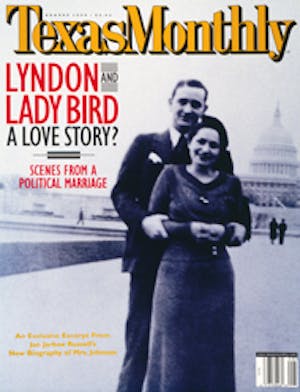In 1939 the much-traveled, largely self-educated Katherine Anne Porter published what is arguably the most artistic work of fiction written by a Texan—three short novels that appeared in a volume titled Pale Horse, Pale Rider. She wrote them in her usual manner, in fits and starts, in places ranging from Basel, Switzerland, and Paris to New Orleans and Doylestown, Pennsylvania. Pale Horse, Pale Rider finished second behind J. Frank Dobie’s Apache Gold and Yaqui Silver in the Texas Institute of Letters’ competition for “best Texas book of the year”; Porter’s relationship with Texas letters was vexed thereafter and remains so today. A. C. Greene’s recent The 50+ Best Books on Texas deems Pale Horse, Pale Rider ineligible for his little pantheon because “it is not specifically a Texas book.”
If anyone has any doubts about Porter’s literary indebtedness to Texas as a place or as a culture, reading “Noon Wine” should deep-six those worries once and for all. Set on a small South Texas farm from 1896 to 1905, it actually takes place on the farm near Kyle where Porter grew up. Mountain City and Buda are mentioned specifically. Porter’s Texas, especially the one she remembered in her fiction, was thoroughly Southern in manners and mores, “for my part of Texas was peopled almost entirely by Southerners.” Of almost equal interest as the story is Porter’s account of how it came into being. In her essay “‘Noon Wine’: The Sources” she wonders at her capacity, in middle age, to recall with such precision the remarkable conversations of men discussing the competing flavors of various cuts of chewing tobacco she had overheard as a child. In such vividly realized details Porter grounded her universal tale about a murder and its consequences in as carefully a rendered sense of place as one can find in fiction.
The two other short novels also grow out of Porter’s Texas upbringing. “Old Mortality” offers a portrait of the emerging artist through the drama of a young girl named Miranda, Porter’s surrogate for herself, as she struggles to understand and overcome the ties of family legend, prejudice, and custom. (Porter later lamented having given the manuscript of this story to “the poor little ole poverty-ridden University of Texas,” where it resides to this day.) The title story, which Porter called “so completely autobiographical it amounts almost to a document,” follows the subsequent life of Miranda as a young woman who miraculously survives a close brush with death during the influenza epidemic of 1918. Even the title recalls a song Miranda and her doomed love, Adam, remember from their childhood in Texas.
Unlike Dobie, whose reputation is mostly confined to the Southwest, Porter commands respect far beyond the Lone Star State. The Collected Stories of Katherine Anne Porter, for example, won both a Pulitzer prize and the National Book Award in 1966. Porter ranks as an important American writer, while her Texas contemporaries recede into the past.






